Effect of Thermal Exposure on Mechanical Properties of Al-Si-Cu-Ni-Mg Aluminum Alloy
Abstract
:1. Introduction
2. Experimental Procedures
3. Results and Discussion
3.1. Microstructure and Morphology of Alloys in Different States
3.2. Evolution of Tensile Properties during Thermal Exposure
3.3. Creep Behavior before and after Thermal Exposure
4. Conclusions
- The main phases at the micro scale of the Al-Si-Cu-Ni-Mg alloy were stable during thermal exposure at 250 °C.
- The UTS of the studied alloys decreased greatly in the initial stage and then basically tended to be stable after thermal exposure at 250 °C for about 100 h.
- The creep resistance deteriorated signally when the creep stress was increased from 20 MPa to 28 MPa at the same creep temperature.
- The main creep mechanism of the as-cast Al-Si-Cu-Ni-Mg alloy at a low temperature and low stress (T ≤ 250 °C; σ ≤ 40 MPa) was grain-boundary creep. The Monkman–Grant empirical formula was used to fit the relationship between the creep life and the minimum creep rate of the cast Al-Si-Cu-Ni-Mg alloy, and the fitting results were: .
Author Contributions
Funding
Data Availability Statement
Acknowledgments
Conflicts of Interest
References
- Mikhaylovskaya, A.V.; Kishchik, A.A.; Tabachkova, N.Y.; Kotov, A.D.; Cheverikin, V.V.; Bazlov, A.I. Microstructural Characterization and Tensile Properties of Al-Mg-Fe-Ce Alloy at Room and Elevated Temperatures. JOM 2020, 72, 1619–1626. [Google Scholar] [CrossRef]
- Hu, K.; Xu, Q.; Ma, X.; Sun, Q.; Gao, T.; Liu, X. A novel heat-resistant Al-Si-Cu-Ni-Mg base material synergistically strengthened by Ni-rich intermetallics and nano-AlNp microskele-tons. Mater. Sci. Technol. 2019, 35, 306–312. [Google Scholar] [CrossRef]
- Mahmoud, E.R.; Shaharoun, A.; Gepreel, M.A.; Ebied, S. Microstructure and Mechanical Properties of Fe-Mn-Ni-Cr-Al-Si High Entropy Alloys. Metals 2022, 12, 1164. [Google Scholar] [CrossRef]
- Silva, C.; Barros, A.; Vida, T.; Garcia, A.; Cheung, N.; Reis, D.A.; Brito, C. Assessing Microstructure Tensile Properties Relationships in Al-7Si-Mg Alloys via Multiple Regression. Metals 2022, 12, 1040. [Google Scholar] [CrossRef]
- Zhang, J.; Feng, J.; Zuo, L.; Ye, B.; Kong, X.Y.; Jiang, H.; Ding, W. Effect of Sc microalloying addition on microstructure and mechanical properties of as-cast Al-12Si alloy. Mater. Sci. Eng. 2019, 766, 138343.1–138343.4. [Google Scholar] [CrossRef]
- Liu, H.Q.; Pang, J.C.; Wang, M.; Li, S.X.; Zhang, Z.F. Effect of temperature on the mechanical properties of Al-Si-Cu-Mg-Ni-Ce alloy. Mater. Sci. Eng. A 2021, 3, 141762. [Google Scholar] [CrossRef]
- Shlyaptseva, A.D.; Petrov, I.A.; Ryakhovsky, A.P.; Medvedeva, E.V.; Tcherdyntsev, V.V. Complex Structure Modification and Improvement of Properties of Aluminium Casting Alloys with Various Silicon Content. Metals 2021, 11, 1946. [Google Scholar] [CrossRef]
- Sui, Y.; Wang, Q.; Liu, T.; Ye, B.; Jiang, H.; Ding, W. Influence of Gd content on microstructure and mechanical properties of cast Al-12Si-4Cu-2Ni-0.8Mg alloys. J. Alloy. Compd. 2015, 622, 572–579. [Google Scholar] [CrossRef]
- Herve, E.; Dendievel, R.; Bonnet, G. Steady-state power-law creep in “inclusion matrix” composite materials. Acta Metall. 1995, 43, 4027–4034. [Google Scholar] [CrossRef] [Green Version]
- Zhang, J.; Fan, J.; Chen, L.; Li, Y. Compressive creep aging behavior and microstructure evolution in extruded Al-Mg-Si alloy under different temperature and stress levels. Mater. Today Commun. 2022, 33, 104722. [Google Scholar] [CrossRef]
- Zhao, B.; Ye, B.; Wang, L.; Bai, Y.; Yu, X.; Wang, Q.; Yang, W. Effect of ageing and thermal exposure on microstructure and mechanical properties of a HPDC Al–Si–Cu–Mg alloy. Mater. Sci. Eng. A 2022, 849, 143463. [Google Scholar] [CrossRef]
- Lin, B.; Li, H.; Xu, R.; Zhao, Y.; Xiao, H.; Tang, Z.; Li, S. Thermal exposure of Al-Si-Cu-Mn-Fe alloys and its contribution to high temperature mechanical properties. J. Mater. Res. Technol. 2020, 9, 1856–1865. [Google Scholar] [CrossRef]
- Yuan, J.; Wang, Q.; Yin, D.; Wang, H.; Chen, C.; Ye, B. Creep behavior of Mg-9Gd-1Y-0.5Zr (wt.%) alloy piston by squeeze casting. Mater. Charact. 2013, 78, 37–46. [Google Scholar] [CrossRef]
- Dong, Z.-Q.; Wang, J.-G.; Guan, Z.-P.; Ma, P.-K.; Zhao, P.; Li, Z.-J.; Lu, T.-S.; Yan, R.-F. Effect of Short T6 Heat Treatment on the Thermal Conductivity and Mechanical Properties of Different Casting Processes Al-Si-Mg-Cu Alloys. Metals 2021, 11, 1450. [Google Scholar] [CrossRef]
- Ning, Z.L.; Yi, J.Y.; Qian, M.; Sun, H.C.; Cao, F.Y.; Liu, H.H.; Sun, J.F. Microstructure and elevated temperature mechanical and creep properties of Mg-4Y-3Nd-0.5Zr alloy in the product form of a large structural casting. Mater. Des. 2014, 60, 218–225. [Google Scholar] [CrossRef]
- Zafar, H.; Khushaim, M.; Ravaux, F.; Anjum, D.H. Scale-Dependent Structure-Property Correlations of Precipitation-Hardened Aluminum Alloys: A Review. JOM 2022, 74, 361–380. [Google Scholar] [CrossRef]
- Kaja, S.S.T.; Gangadasari, P.R.; Ayyagari, K.P.R. Extending the Tolerance of Iron in Cast Al-Si Alloy. JOM 2021, 73, 2652–2657. [Google Scholar] [CrossRef]
- ISO 204:2009; Metallic Materials—Uninterrupted Materials Uniaxial Creep Testingin Tension—Method of Test. International Organization for Standardization: Geneva, Switzerland, 2009.
- Zuo, L.; Ye, B.; Feng, J.; Kong, X.; Jiang, H.; Ding, W. Effect of Q-Al5Cu2Mg8Si6 phase on mechanical properties of Al-Si-Cu-Mg alloy at elevated temperature. Mater. Sci. Eng. A 2017, 693, 26–32. [Google Scholar] [CrossRef]

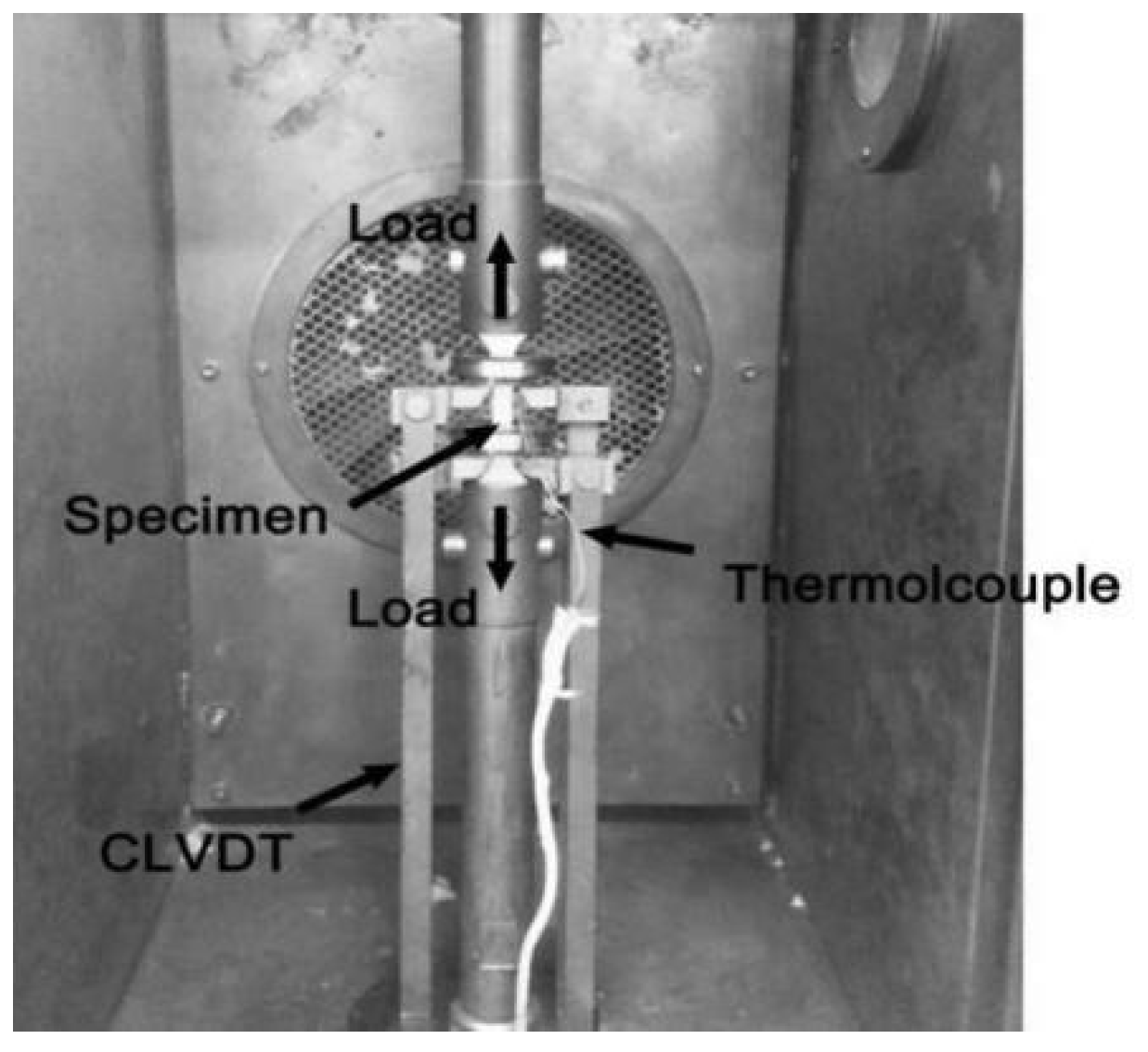
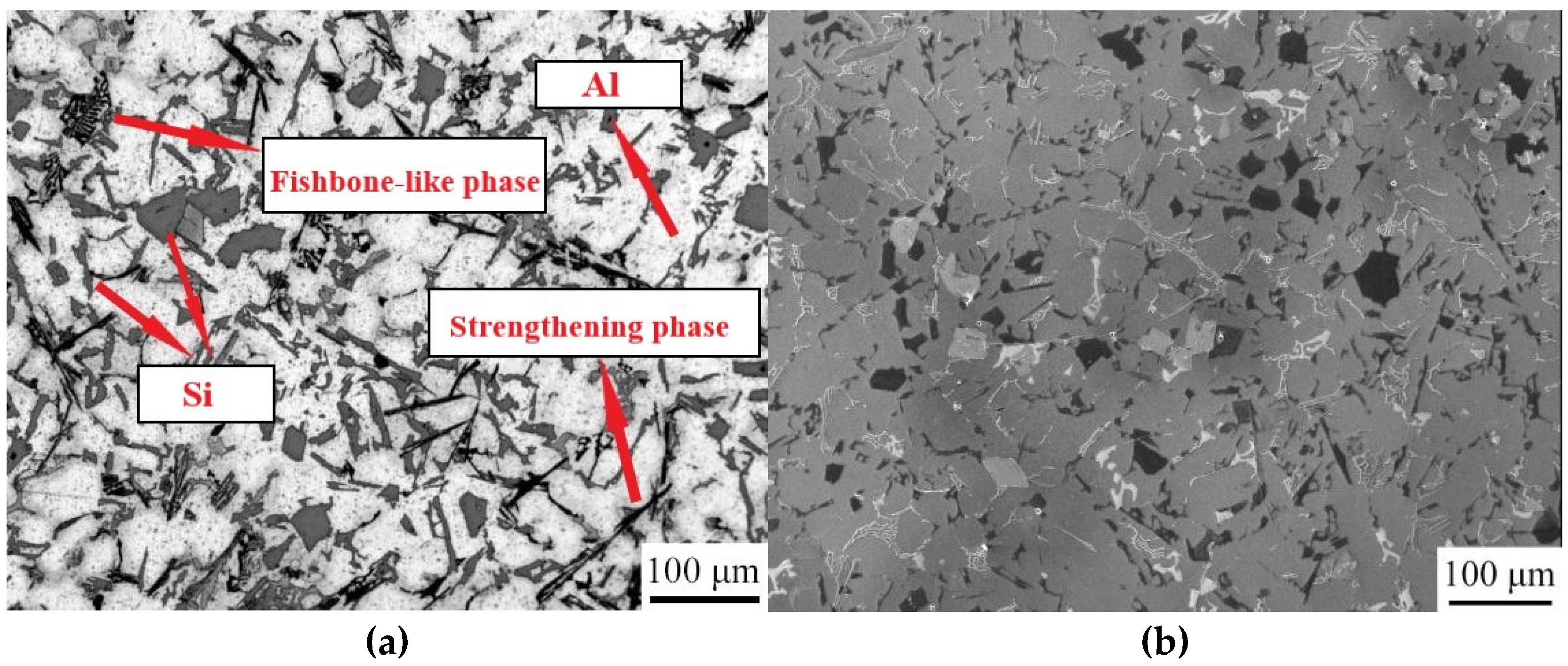
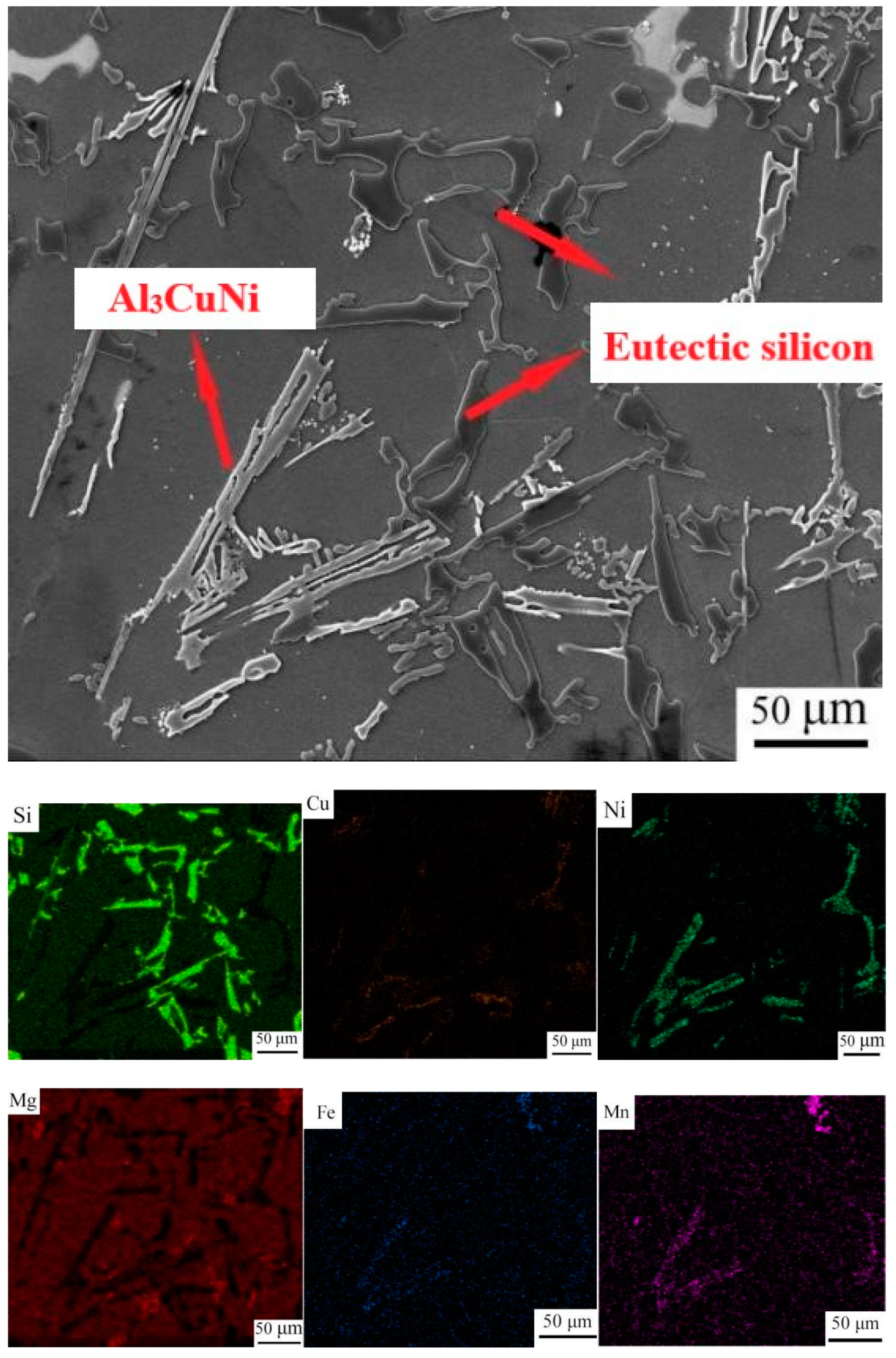
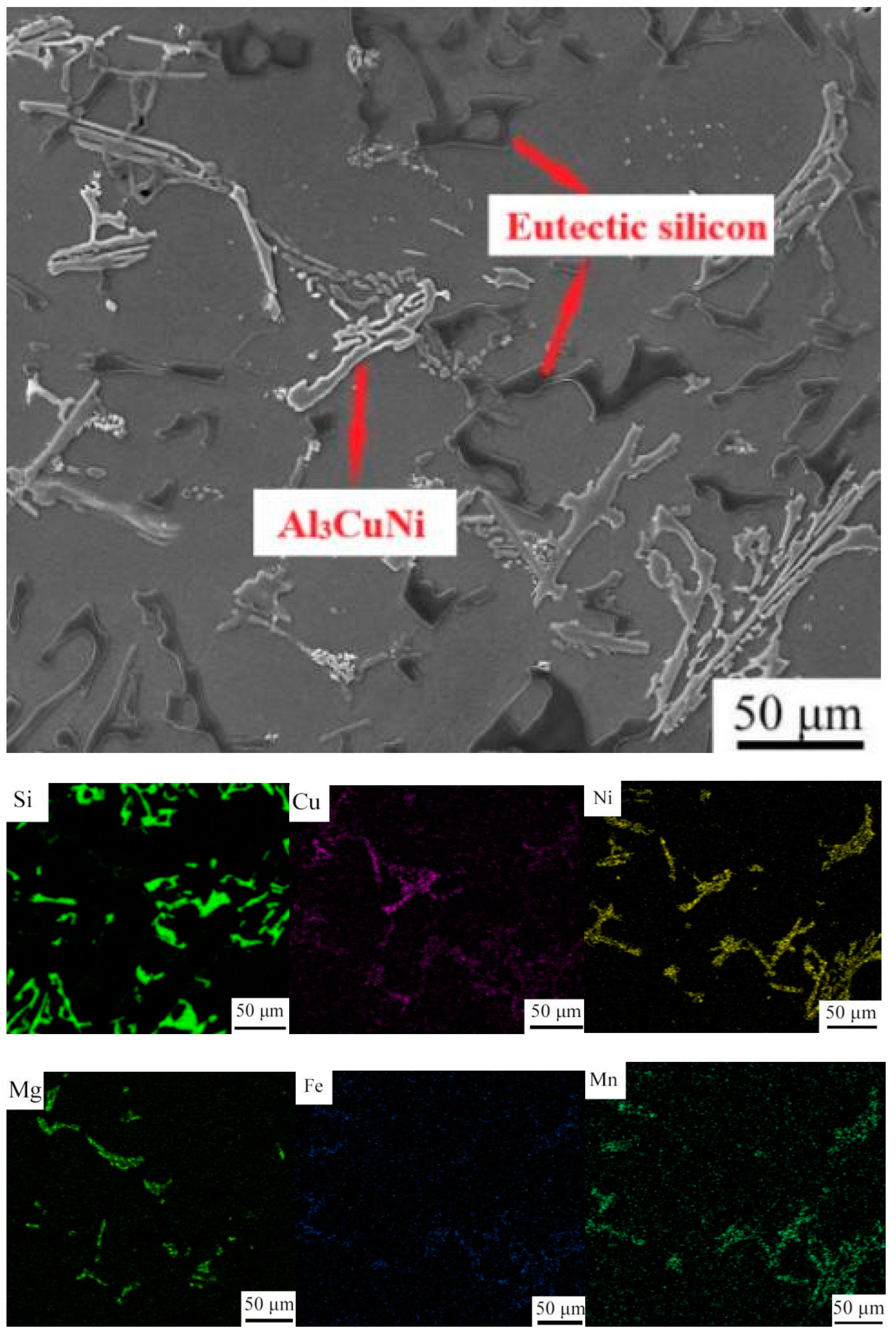
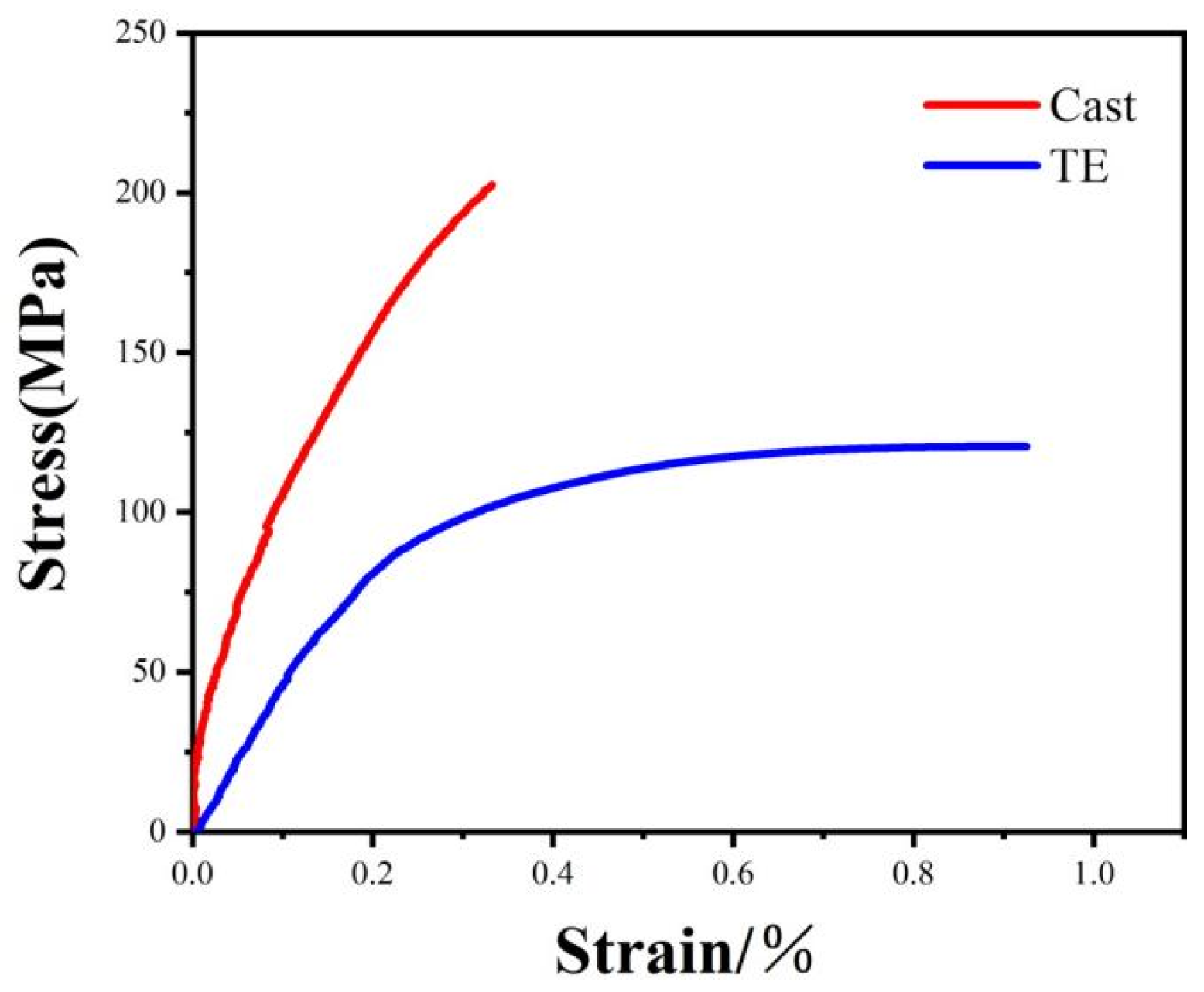
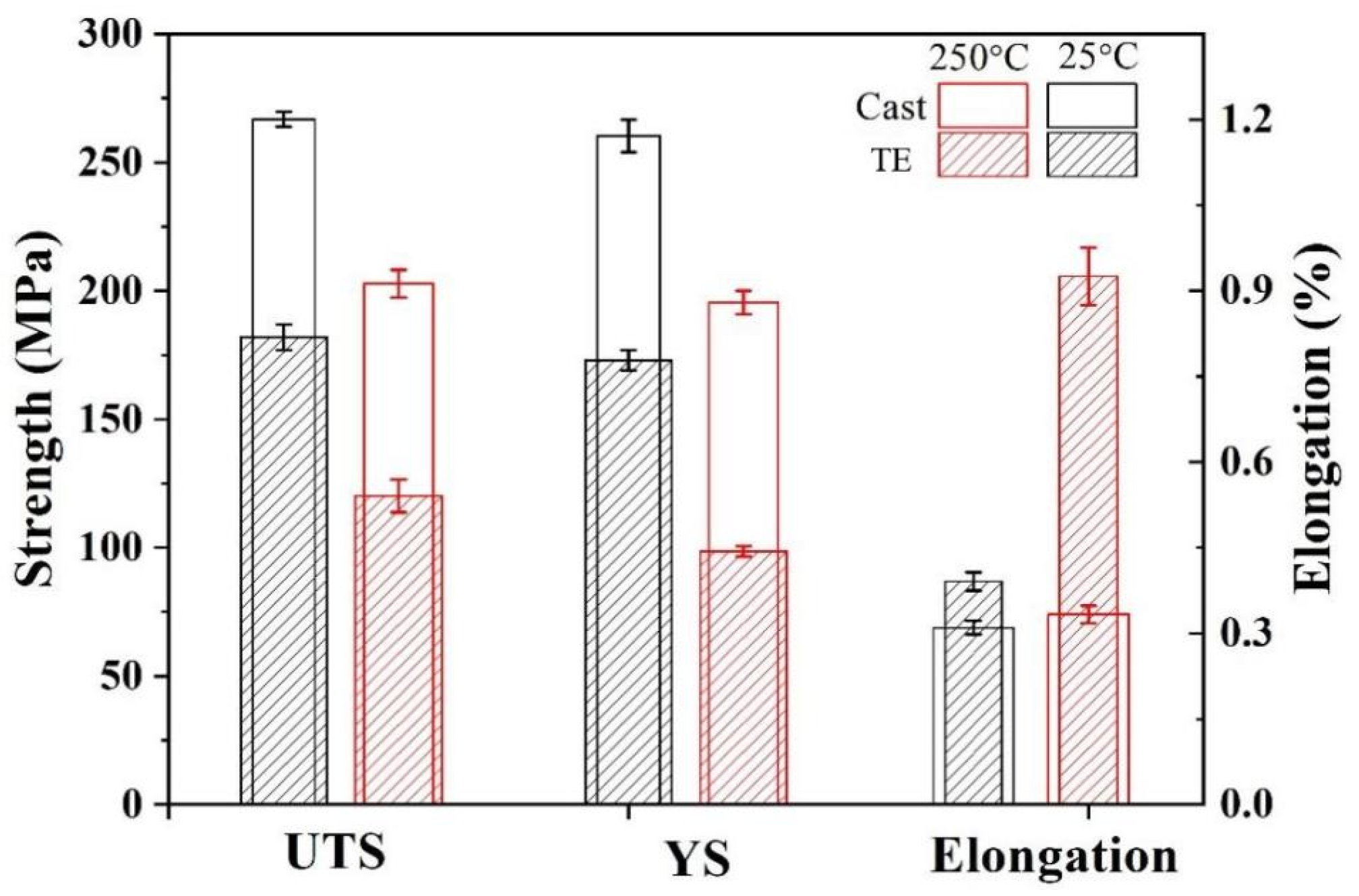
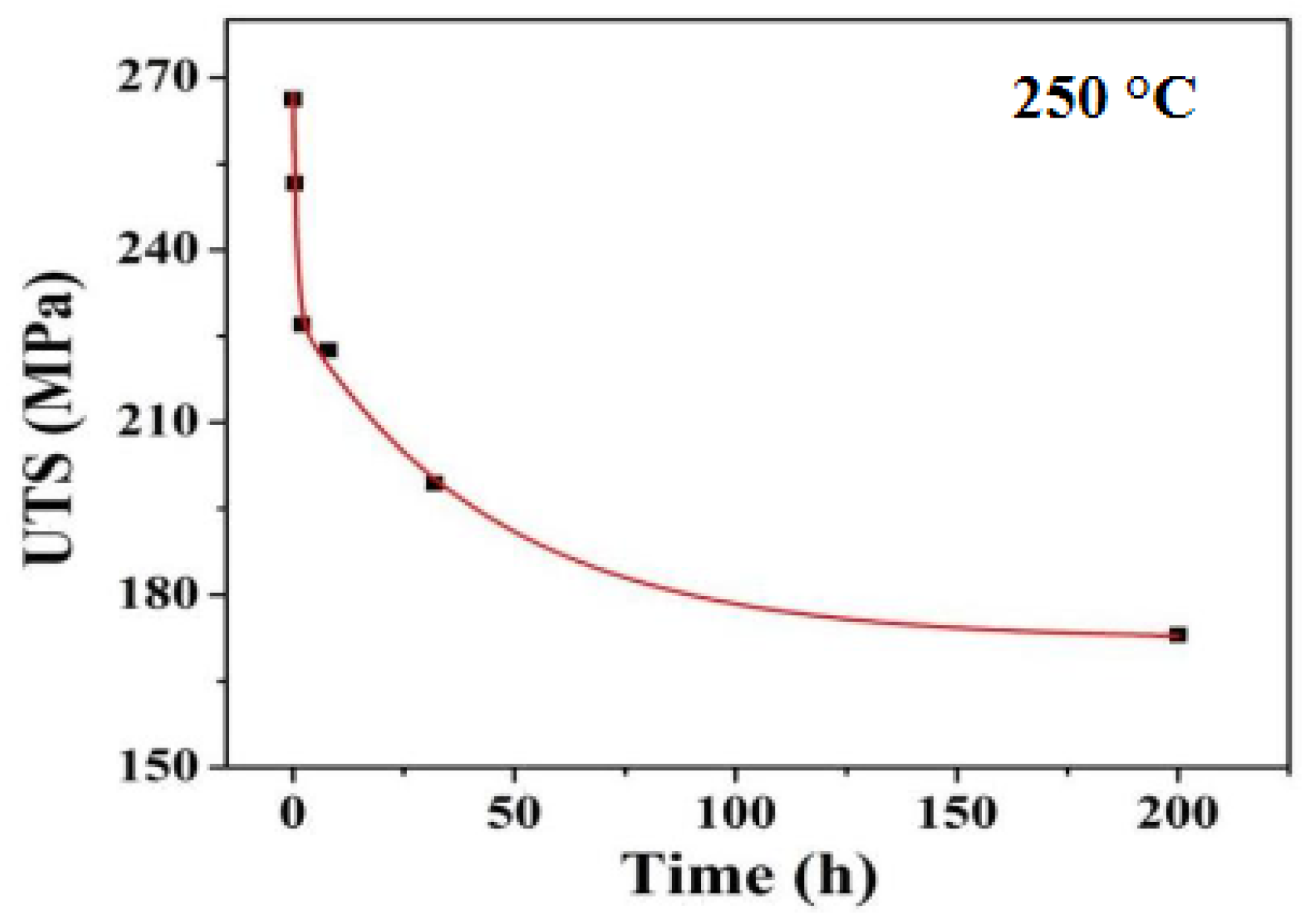
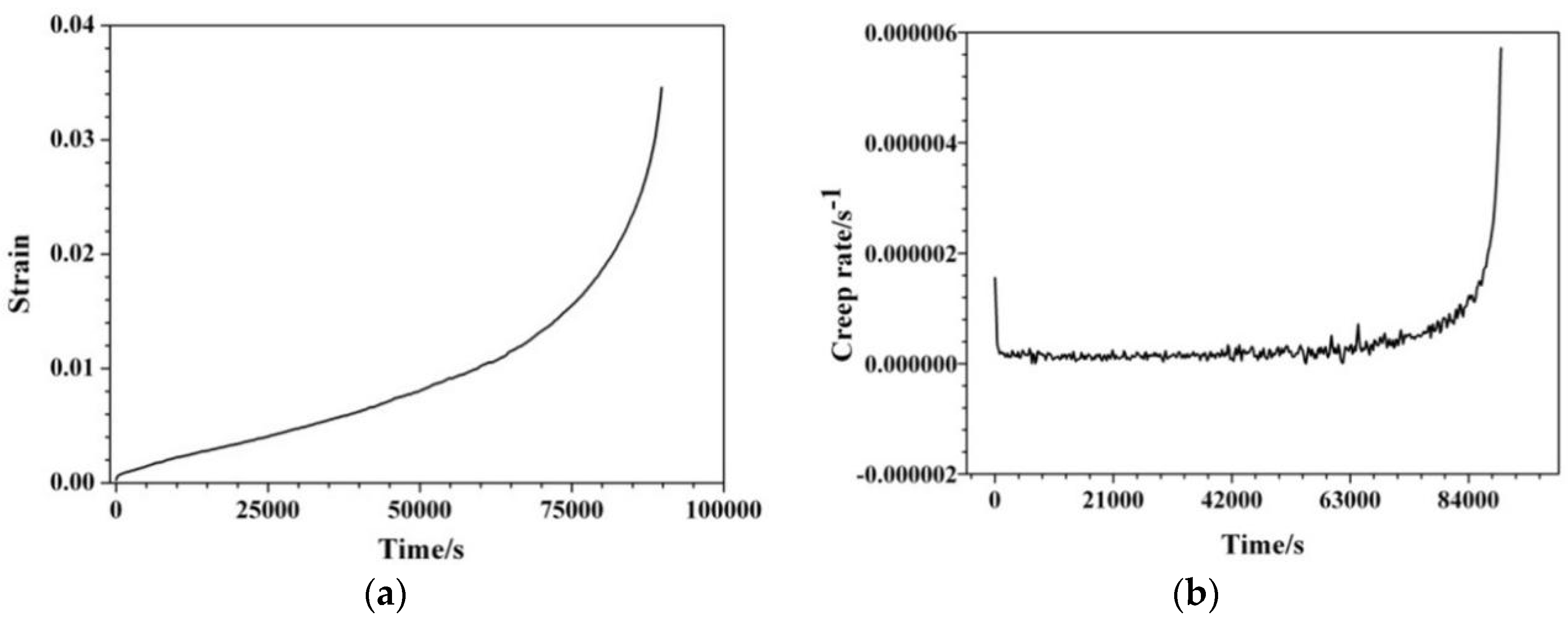
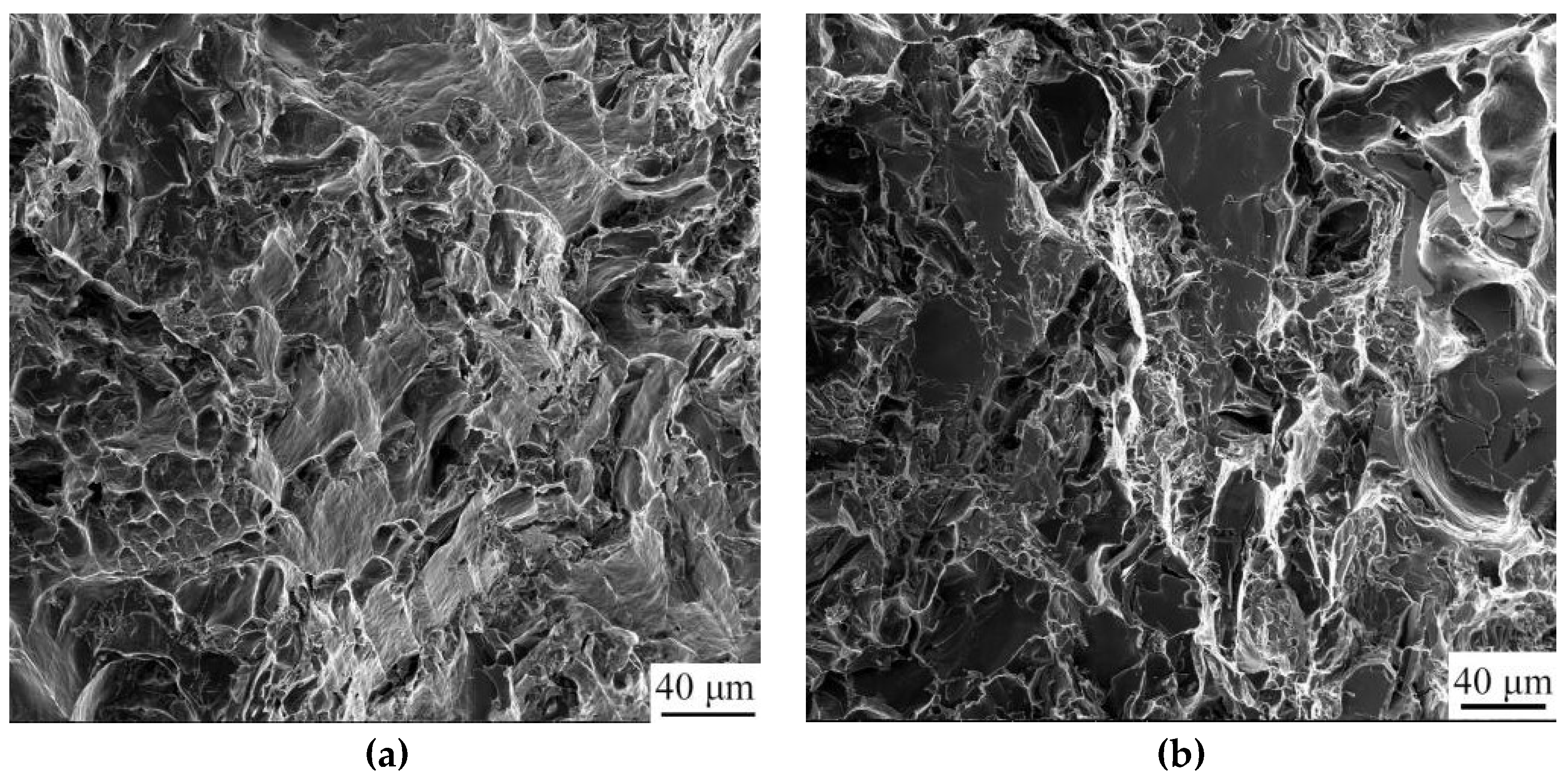
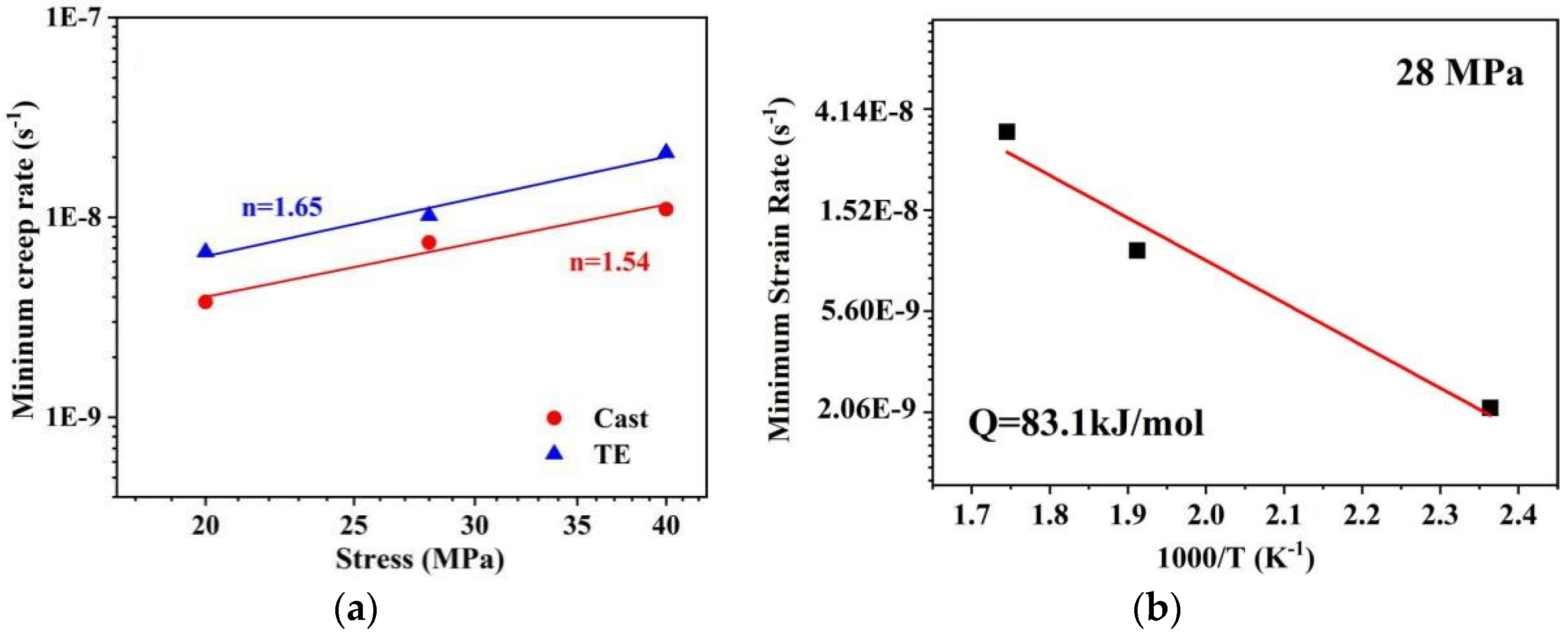
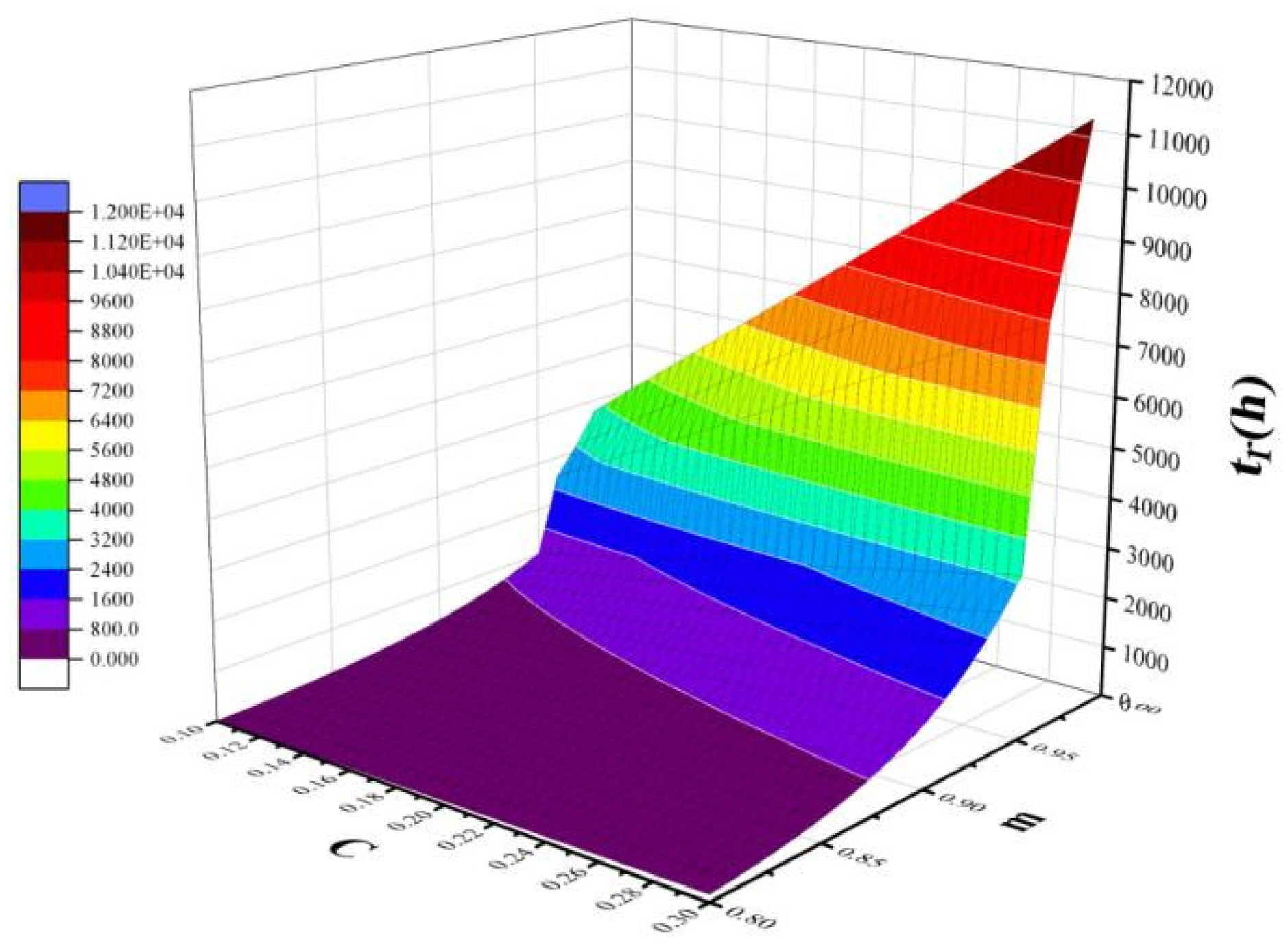
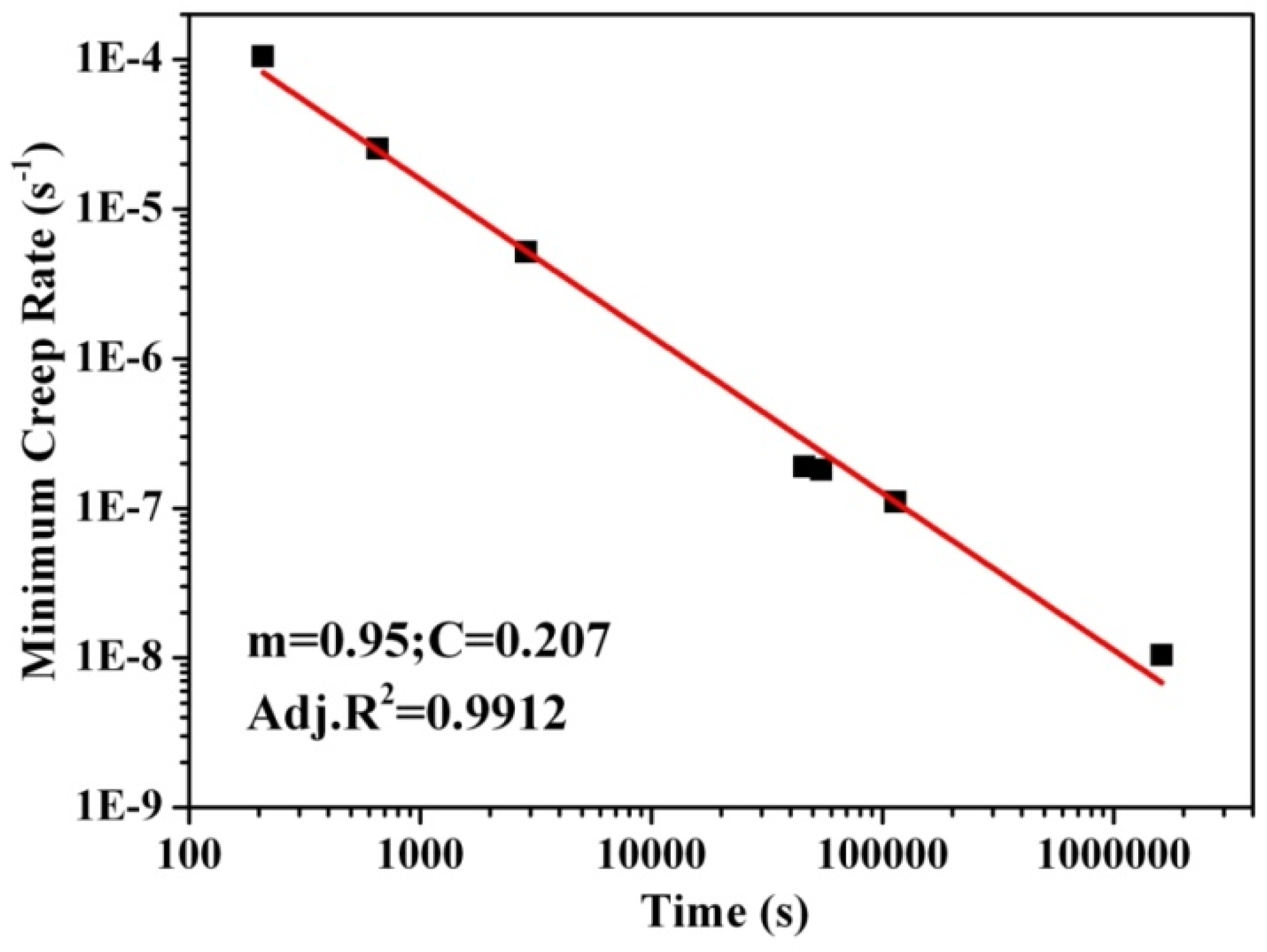
| Elements | Si | Cu | Ni | Mg | Mn | Zn | Ti | Fe | Ce | Al |
|---|---|---|---|---|---|---|---|---|---|---|
| wt. % | 12.34 | 3.81 | 1.97 | 0.79 | 0.53 | 0.26 | 0.23 | 0.18 | 0.23 | Bal |
| Alloy State | Temperature | Creep Rate (s−1) | |
|---|---|---|---|
| 20 MPa | 28 MPa | ||
| As-cast alloy | 250 °C | 6.69 × 10−9 | 1.02 × 10−8 |
| Thermal exposed alloy | 250 °C | 3.78 × 10−9 | 1.10 × 10−8 |
| (h) | 10 | 100 | 1000 |
| (s−1) | 3.0 × 10−6 | 2.7 × 10−7 | 2.4 × 10−8 |
Disclaimer/Publisher’s Note: The statements, opinions and data contained in all publications are solely those of the individual author(s) and contributor(s) and not of MDPI and/or the editor(s). MDPI and/or the editor(s) disclaim responsibility for any injury to people or property resulting from any ideas, methods, instructions or products referred to in the content. |
© 2023 by the authors. Licensee MDPI, Basel, Switzerland. This article is an open access article distributed under the terms and conditions of the Creative Commons Attribution (CC BY) license (https://creativecommons.org/licenses/by/4.0/).
Share and Cite
Chen, F.; Liu, C.; Zuo, L.; Wu, Z.; He, Y.; Dong, K.; Li, G.; He, W. Effect of Thermal Exposure on Mechanical Properties of Al-Si-Cu-Ni-Mg Aluminum Alloy. Crystals 2023, 13, 236. https://doi.org/10.3390/cryst13020236
Chen F, Liu C, Zuo L, Wu Z, He Y, Dong K, Li G, He W. Effect of Thermal Exposure on Mechanical Properties of Al-Si-Cu-Ni-Mg Aluminum Alloy. Crystals. 2023; 13(2):236. https://doi.org/10.3390/cryst13020236
Chicago/Turabian StyleChen, Fanming, Chengwen Liu, Lijie Zuo, Zhiyuan Wu, Yiqiang He, Kai Dong, Guoqing Li, and Weiye He. 2023. "Effect of Thermal Exposure on Mechanical Properties of Al-Si-Cu-Ni-Mg Aluminum Alloy" Crystals 13, no. 2: 236. https://doi.org/10.3390/cryst13020236
APA StyleChen, F., Liu, C., Zuo, L., Wu, Z., He, Y., Dong, K., Li, G., & He, W. (2023). Effect of Thermal Exposure on Mechanical Properties of Al-Si-Cu-Ni-Mg Aluminum Alloy. Crystals, 13(2), 236. https://doi.org/10.3390/cryst13020236






